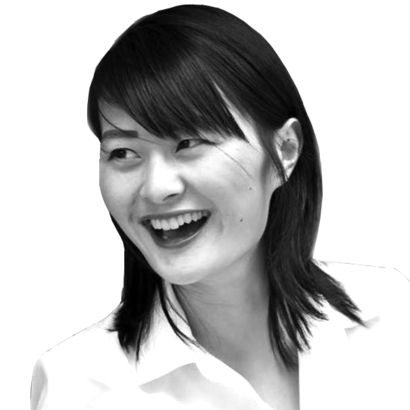Aespa for Givenchy. Jackson Wang for Louis Vuitton. Suga of BTS for Valentino. Chanyeol of EXO for Prada.
The luxury-fashion-brand ambassadorship role has long been dominated by Western celebrities. In the 1990s, fashion leaned on iconic supermodels such as Naomi Campbell and Kate Moss to promote their brands. In the 2000s, actors and actresses became the faces of major fashion houses, whether it was Emma Watson for Burberry, Angelina Jolie for Louis Vuitton, or Keira Knightley for Chanel. In 2009, when Lancôme and Julia Roberts struck a single-year contract worth $20 million, the news made waves across the globe.
But in recent years, a mad stampede has converged upon Korean pop stars to represent luxury fashion’s biggest names. During the last three years, all four members of Blackpink, a global sensation that has been tapped to headline Coachella in April, have signed brand ambassadorships with multiple major labels—Jisoo with Dior and Cartier, Jennie with Chanel and Calvin Klein, Rosé with Saint Laurent and Tiffany & Co., and Lisa with Celine and Bulgari.

The shift isn’t surprising. East Asia dominates the market for luxury goods. A recent study from Bain & Co. and Altagamma projects that by 2030, China will represent 40 percent of all luxury consumers. A number of ethnically Chinese K-pop stars have garnered huge popularity in mainland China, and it hasn’t gone unnoticed by luxury fashion. The Hong Kong–born Jackson Wang recently scored a Louis Vuitton ambassadorship, while Chinese national Ningning of Aespa represents Givenchy alongside the rest of the girl group.
A Morgan Stanley analysis showed that, in 2022, South Korean spending on luxury goods went up by 24 percent. Additionally, South Koreans spend roughly the same amount per capita on luxury goods as Chinese and American individuals combined.
“If you look at the numbers, it just makes sense,” says Timmy Malkoun, a strategic consultant for brands such as Prabal Gurung and FarFetch. “The Chinese market is the biggest, but K-pop stars’ relevance is far beyond Asia. They’re huge in the U.S., they’re big in London, they’re big in the Arab world.... The fandom is so crazy, and people really advocate for these stars.”

Another unique aspect of Korean fandom is the parasocialness of the K-pop idol. “In Western media, it’s pathologized as a crazy fan,” Sharon Kong-Perring, a Ph.D. candidate at Birmingham City University, says. “In Korea, it’s more that this K-pop idol is an idealized significant other or brother.” Being a good fan, she says, means proudly sharing all the accomplishments of your favorite group members on your own social media. A brand ambassadorship for a K-pop star equates to a leap in that brand’s salience online as fans actively blast the good news. “It’s very aspirational, which gives you a pathway to this East Asian market by way of this K-pop parasocialness. East Asia is an avid consumer society, and that’s something these fashion houses have come to realize.”
Despite what looks like a mad rush, this convergence has been the result of a decade-long courtship. Solo artists such as G-Dragon and Taeyang were first invited to Paris Fashion Week in 2014, while Winner’s Mino walked the runway for Louis Vuitton at Paris Fashion Week in 2019.
Others think that the fashion world is actually behind on jumping on the K-pop wave. “I think it’s a little bit ridiculous that these fashion houses have taken so long to make these brand-ambassadorship positions for K-pop,” CedarBough Saeji, a professor of Korean and East Asian studies at Pusan National University, says. “Fashion is always trying to dictate future trends. K-pop stars have the capacity to make trends happen, and that’s been clear for quite a few years now. For them to not figure that out until now seems like they’re late for the party.”
“They’re huge in the U.S., they’re big in London, they’re big in the Arab world.... The fandom is so crazy, and people really advocate for these stars.”
The move toward K-pop coincides with a rebranding for some of these fashion houses as they recover from the pandemic slump. In 2020, the LVMH luxury conglomerate saw sales plummet by 36 percent. “Dior and Louis went back to the vault and reissued the Saddlebag for Dior, and the Speedy for LV. Burberry did a complete rebrand and re-did their logo,” says Kong-Perring. “Some of these brands want something fresh and new, and K-pop is the big thing in media right now, with massive global appeal.” When the luxury market came roaring back, K-pop stars appeared as the faces of these brands.
The bandwagon effect has led to some rapid acquisitions. Individual members of NewJeans, a girl group that debuted in 2022 to much fanfare, signed brand ambassadorships with Gucci a mere three months after their debut, and with Burberry shortly after. The 14-year old Hyein became Louis Vuitton’s youngest-ever brand ambassador.
“If everyone wants one now, I wonder what the actual impact is, especially with the fourth generation of K-pop idols,” speculates Malkoun. For a luxury-fashion house trying to sustain relevance in the East Asian market, though, a K-pop brand ambassador is now a staple.
“If you already have this market, why not demonstrate that you also see East Asia as a place of trendsetting, that you see East Asian bodies as beautiful?” Saeji says. “Look at these stars—they get unprecedented attention everywhere they go. They can’t walk around Paris without people going crazy .... They’re like a magnet for people.”
Lynn Q. Yu is an Editor at Large for AIR MAIL


